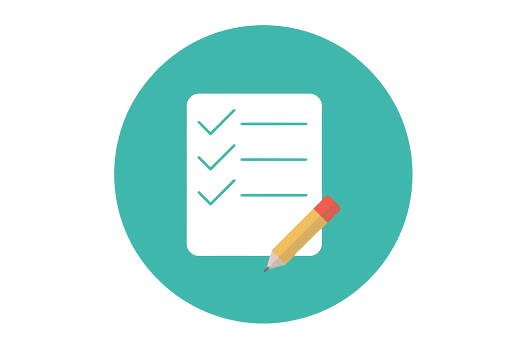Your Shopping Cart

Pursue Python Developer Masters Program by enrolling in EDTIA'S Python Developer Masters Program Training and upskill your knowledge and technological skill in the field.
Python Developer Masters program will help you become a Python developer and open a career possibility in different fields such as Machine Learning, Data Science, Big Data, and Web Development. Python is a premier, adaptable, and influential open-source language that is easy to learn and use and has powerful data manipulation and analysis libraries.
A Python Developer is accountable for the coding, designing, deploying, and debugging projects, generally on the server-side. Python is used in web development, machine learning, AI, scientific computing, and academic research.
Programmers Developers Technical Leads and Data Scientists fresh graduates.
Python is usually used for developing websites and software, task automation, data analysis, and data visualization.
One can do this course after completing their graduation. The candidate should have basic computer knowledge.
Understand the concepts of the Python Language.
Learn various sequence structures their usage, and execute sequence operations.
understand diverse types of Functions and various Object-Oriented concepts such as Abstraction, Inheritance, Polymorphism, Overloading, Constructor, and so on.
Discover how to create generic python scripts, address errors/exceptions in code, and extract/filter content using regex.
Learn the basics of Data Analysis using two essential libraries: NumPy and Pandas.
know about analyzing datasets and data manipulation using Pandas.
learn about Data Visualization using Matplotlib.
learn GUI programming using the ipywidgets package.
learn to design Python Applications.
design Python Applications.
you will be introduced to Data Science how it helps analyze large and unstructured data with different tools.
Learn sources available to extract data, arrange the data in a structured form, analyze the data, and represent the data in a graphical format.
understands the concept of Machine Learning with Python and its types.
learn Supervised Learning Techniques and their implementation.
learn about the effect of dimensions within data.
learn Supervised Learning Techniques and their implementation.
knows about Unsupervised Learning, and the various types of clustering used to analyze the data.
learn Association rules and their extension.
learn about developing an intelligent learning algorithm.
know about Time Series Analysis to forecast dependent variables based on time.
understand selecting one Model over another, Boosting and its importance in Machine Learning.
implement a Project end to end, and the Expert will share his insights from the Industry to help you with your career in this profession. After that, we will have a Q&A and doubt clearing session.
Learn text mining and the ways of extracting and reading data from some common file types, including NLTK corpora
Learn some ways of text extraction and cleaning using NLTK.
comprehend to study a sentence structure using a word group to construct phrases and sentences using NLP and English grammar rules.
review text classification, vectorization techniques, and processing using scikit-learn.
learn to create a Machine Learning classifier for text classification
understand Sentiment Classification on Movie Rating Dataset
Learn about Big Data, Hadoop, and Spark.
Know Python programming basics and learn different types of sequence structures, related operations, and their usage.
Discover How to create generic python scripts, how to address errors/exceptions in code, and how to extract/filter content using regex.
Learn about Apache Spark and its components.
know about Spark - RDDs and other RDD related manipulations for implementing business logic
learn about SparkSQL, data-frames, datasets in Spark SQL, and different kinds of SQL operations performed on the data-frames.
Learn about Machine Learning techniques/algorithms and their implementation using Spark MLlib.
implement various algorithms supported by MLlib.
Learn about Kafka and Kafka Architecture.
Learn about Spark streaming DStreams and their Transformations.
discover about the different streaming data sources such as Kafka and flume.
A bank is attempting to broaden the financial inclusion for the unbanked population by providing a good and secure borrowing experience. To ensure this underserved population has a good loan experience, it uses various alternative data--including telco and transactional information--to predict their clients' repayment abilities. The bank has asked you to develop a solution to ensure that clients capable of repayment are accepted and that loans are given with a principal, maturity, and repayment calendar to empower their clients to succeed.
Analyze and deduce the best-performing movies based on customer feedback and review. Use two different APIs (Spark RDD and Spark DataFrame) on datasets to find the best ranking movies.
Learn fundamental concepts of Spark GraphX programming concepts and operations along with different GraphX algorithms and their implementations.
Learn what Python is and its basics.
Learn various types of sequence structures, related operations, and their usage.
Learn to create generic python scripts, address errors/exceptions in code, and extract/filter content using regex.
Understand the Object-Oriented Programming
Learn to use databases and what a project skeleton looks like in Python.
Know about Django and learn to create views and perform URL mapping.
create Templates and Forms in Django
construct Database Models and add Dynamic content to your webpages
Learn to serialize and deserialize data and create APIs.
know to parse data stored in XML & JSON formats using Python
Python is adaptable in terms of functionality and can be used for web scraping, scripting, and writing algorithms and data structures. It's frequently used in data visualization, automation, artificial intelligence, and data analysis projects.
Python developers are in high demand - not only because the language is so popular and widely used but mainly because Python evolved as a solution in many different areas.
Python growth is promising in the future. Top companies are hooked with java and python trending technologies now and in the future. As a result, Python has become a root language, using Python for research, production, development. Small, big, start-up organizations choose Python to meet their customer requirements.
Python is now one of the most popular and widely used programming languages globally. Python is used for data analytics, machine learning, and design, apart from web and software development.


Every certification training session is followed by a quiz to assess your course learning.

The Mock Tests Are Arranged To Help You Prepare For The Certification Examination.

A lifetime access to LMS is provided where presentations, quizzes, installation guides & class recordings are available.

A 24x7 online support team is available to resolve all your technical queries, through a ticket-based tracking system.

For our learners, we have a community forum that further facilitates learning through peer interaction and knowledge sharing.

Successfully complete your final course project and Edtia will provide you with a completion certification.
You will receive Edtia Python Developer Masters Program certification on completing live online instructor-led classes. After completing the course module, you will receive the certificate.
A Python Developer, a Masters Program certificate is a certification that verifies that the holder has the knowledge and skills required to work with Python Programming.
By enrolling in the python Developer Masters Program course and completing the module, you can get Edtia Natural Language Processing with Python Certification.
Yes, Access to the course material will be available for a lifetime once you have enrolled in Edita Python Developer Masters Program Course.
